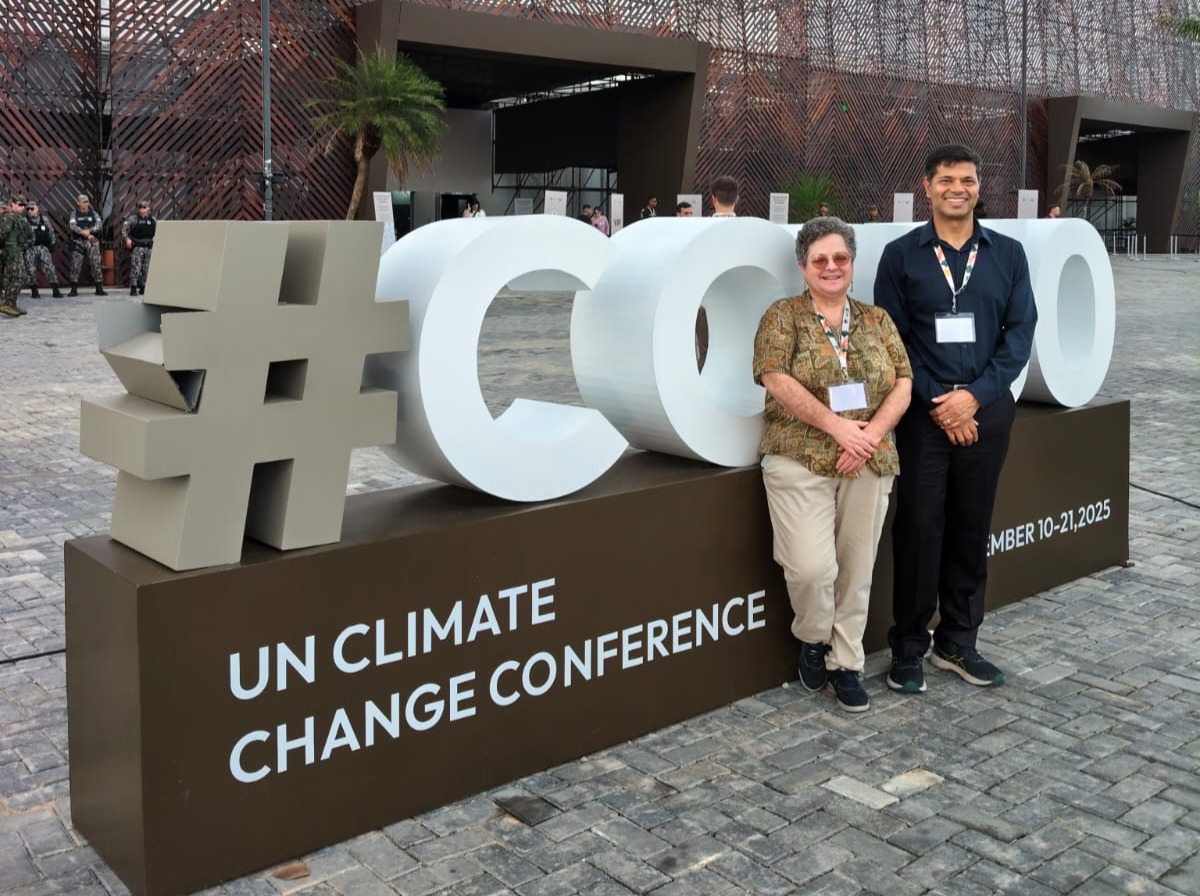The Hershey Co: Disclosure of Regenerative Agriculture Practices – As You Sow
.jpg?format=1500w#)
Report on Agricultural Practices, Corporate Responsibility, and Sustainable Development Goals
1.0 The Impact of Industrial Agriculture on Sustainable Development
Current industrial agricultural practices present significant challenges to achieving multiple Sustainable Development Goals (SDGs). The annual application of over one billion pounds of synthetic pesticides in farming operations directly undermines global sustainability targets.
- SDG 2 (Zero Hunger) & SDG 8 (Decent Work and Economic Growth): Pesticide use degrades soil fertility by eliminating microorganisms essential for nutrient cycling and soil retention. This degradation leads to erosion and reduces agricultural resilience, threatening food security and imposing an estimated annual loss of $8 billion to global GDP.
- SDG 3 (Good Health and Well-being): Agricultural pesticide use is linked to severe long-term health issues for farmworkers and adjacent communities, including cancer and birth defects. It is also responsible for the acute poisoning of an estimated 25 million farm workers each year.
- SDG 6 (Clean Water and Sanitation) & SDG 15 (Life on Land): Pesticides are a primary contributor to water and air pollution. They directly harm biodiversity, including critical pollinator populations responsible for 35% of global crop production, thereby threatening terrestrial ecosystems.
- SDG 13 (Climate Action): Soil degradation exacerbates the impacts of climate-related events such as droughts and floods, reducing the adaptive capacity of agricultural systems.
2.0 Regenerative Agriculture as a Pathway to Achieving the SDGs
Regenerative agriculture offers a systemic solution to mitigate the negative impacts of industrial farming and advance the SDGs. This approach emphasizes a suite of practices designed to restore ecosystem health.
2.1 Core Practices and SDG Alignment
- Reduced Synthetic Inputs: Minimizing synthetic pesticides and fertilizers directly supports SDG 3, SDG 6, and SDG 15 by reducing harm to human health and ecosystems.
- Soil Health Improvement: Practices such as reduced tillage, cover cropping, and crop rotation enhance soil health and topsoil retention. This contributes to:
- SDG 2: By creating more resilient and stable food production systems.
- SDG 13: By increasing the potential for soil to act as a carbon sink. Reports from the Rodale Institute indicate that regenerative practices can sequester more carbon than they emit annually.
Failure to integrate pesticide reduction as a core component diminishes the potential of regenerative agriculture to deliver on its climate and biodiversity promises, particularly concerning SDG 13 and SDG 15.
3.0 Corporate Performance and Accountability Analysis: The Hershey Company
An assessment of The Hershey Company’s 2023 ESG report reveals a partial commitment to regenerative agriculture that fails to address key sustainability metrics, creating a potential misalignment with SDG 12 (Responsible Consumption and Production).
3.1 Identified Gaps in Sustainability Reporting
- Hershey’s climate action plan promotes regenerative practices like cover crops and reduced tillage within its sugar supply chain.
- However, the company does not disclose pesticide reduction as a component of its program. This omission represents a significant blind spot, as pesticide dependency undermines the soil sequestration and climate benefits central to achieving SDG 13.
- This gap raises the potential for claims of greenwashing and places Hershey behind industry peers such as Lamb Weston, Conagra, and McCain Foods, who publicly measure and report on pesticide reduction within their regenerative agriculture frameworks.
4.0 Recommendation for Enhanced SDG Alignment
To mitigate shareholder risk and align corporate strategy with global sustainability imperatives, a formal resolution has been proposed. The resolution requests that The Hershey Company conduct a comprehensive assessment to fully integrate pesticide reduction into its sustainability platform.
Proposed Action: Shareholders request that Hershey issue a report, at reasonable cost and omitting proprietary information, disclosing the costs and benefits of including pesticide reduction goals as part of a regenerative agriculture program. This action will enhance corporate transparency, strengthen its commitment to SDG 2, SDG 3, SDG 12, SDG 13, and SDG 15, and solidify its position in a marketplace that increasingly demands verifiable environmental and social responsibility.
Analysis of Sustainable Development Goals in the Article
-
Which SDGs are addressed or connected to the issues highlighted in the article?
The article addresses several Sustainable Development Goals (SDGs) by discussing the environmental, social, and economic impacts of industrial agriculture and contrasting them with the benefits of regenerative practices. The following SDGs are connected to the issues highlighted:
- SDG 2: Zero Hunger: The article directly relates to sustainable agriculture by discussing how industrial pesticide use leads to soil degradation and erosion, which in turn reduces “food security.” It promotes regenerative agriculture as a system that preserves “soil health and retain[s] topsoil.”
- SDG 3: Good Health and Well-being: The text highlights the negative health impacts of pesticides on humans, mentioning “long-term health impacts to farmworkers and fenceline communities, including asthma, cancer, and birth defects,” as well as the “acute poisoning of 25 million farm workers annually.”
- SDG 6: Clean Water and Sanitation: The article points out that the use of pesticides “contributes to air and water pollution,” which is a direct concern under this goal aimed at ensuring the availability and sustainable management of water.
- SDG 8: Decent Work and Economic Growth: The economic consequences of unsustainable agricultural practices are noted, with the article stating that soil degradation imposes an “estimated loss of $8 billion annually to global GDP.” This connects environmental degradation to economic performance.
- SDG 12: Responsible Consumption and Production: The article focuses on corporate responsibility within supply chains. It critiques The Hershey Company for not including pesticide reduction in its ESG report and regenerative agriculture program, while praising peers like “Lamb Weston, Conagra, and McCain Foods” who do. This directly addresses corporate sustainability practices and reporting.
- SDG 13: Climate Action: The connection to climate change is explicitly made. The article states that regenerative agriculture can “sequester more carbon annually than is emitted” and that failure to reduce pesticide dependency “diminishes regenerative farming’s potential to sequester carbon and deliver measurable climate and financial returns.”
- SDG 15: Life on Land: The article emphasizes the harm industrial agriculture causes to terrestrial ecosystems, stating that pesticide use “directly harms biodiversity, including pollinators critical to 35% of crop production” and “decrease[s] soil fertility by killing soil microorganisms.”
-
What specific targets under those SDGs can be identified based on the article’s content?
Based on the issues discussed, the following specific SDG targets can be identified:
- Target 2.4: By 2030, ensure sustainable food production systems and implement resilient agricultural practices that increase productivity and production, that help maintain ecosystems, that strengthen capacity for adaptation to climate change… and that progressively improve land and soil quality. The article’s entire argument for regenerative agriculture—which includes “reduced tillage, crop rotation, cover cropping, and natural pest management” to “preserve soil health”—directly supports this target.
- Target 3.9: By 2030, substantially reduce the number of deaths and illnesses from hazardous chemicals and air, water and soil pollution and contamination. The mention of “acute poisoning of 25 million farm workers annually” and “long-term health impacts” from pesticides aligns perfectly with this target.
- Target 6.3: By 2030, improve water quality by reducing pollution, eliminating dumping and minimizing release of hazardous chemicals and materials. The article’s statement that pesticides contribute to “water pollution” directly relates to this target.
- Target 8.4: Improve progressively, through 2030, global resource efficiency in consumption and production and endeavour to decouple economic growth from environmental degradation. The article links environmental degradation (soil health) to economic loss (“$8 billion annually to global GDP”), advocating for practices that improve resource efficiency.
- Target 12.6: Encourage companies, especially large and transnational companies, to adopt sustainable practices and to integrate sustainability information into their reporting cycle. The article’s core purpose is to pressure Hershey to improve its regenerative agriculture program and report on pesticide reduction, citing its peers who “publicly measure and report pesticide reduction.”
- Target 13.1: Strengthen resilience and adaptive capacity to climate-related hazards and natural disasters. The article notes that regenerative agriculture helps sequester carbon and makes farming more resilient to climate impacts like “droughts, floods, storms, and heatwaves.”
- Target 15.3: By 2030, combat desertification, restore degraded land and soil, including land affected by desertification, drought and floods, and strive to achieve a land degradation-neutral world. The focus on reversing “soil degradation and erosion” and preserving “soil health and retain[ing] topsoil” through regenerative practices is central to this target.
- Target 15.5: Take urgent and significant action to reduce the degradation of natural habitats, halt the loss of biodiversity and, by 2020, protect and prevent the extinction of threatened species. The article’s concern over pesticides harming “biodiversity, including pollinators,” aligns with this target.
-
Are there any indicators mentioned or implied in the article that can be used to measure progress towards the identified targets?
The article mentions or implies several quantitative and qualitative indicators that can be used to measure progress:
- Pounds of synthetic pesticides applied: The article opens by stating that “industrial agriculture applies over one billion pounds of synthetic pesticides annually.” A reduction in this amount would be a direct indicator of progress.
- Number of farmworkers poisoned: The statistic of “acute poisoning of 25 million farm workers annually” serves as a baseline indicator for Target 3.9. A decrease in this number would signify improvement.
- Economic loss from soil degradation: The figure of “$8 billion annually to global GDP” is an economic indicator of the cost of unsustainable practices. Measuring changes in this economic impact could track progress for Target 8.4.
- Rate of carbon sequestration: The claim that “regenerative agriculture can sequester more carbon annually than is emitted” implies that the amount of carbon sequestered in soil is a key performance indicator for climate action (Target 13.1).
- Corporate reporting on pesticide reduction: The article implies an indicator for Target 12.6 by highlighting that Hershey’s peers “publicly measure and report pesticide reduction.” The presence and quality of such reporting is a measurable indicator of corporate accountability.
- Pollinator population health: While not a direct number, the mention of harm to “pollinators critical to 35% of crop production” suggests that pollinator health and population counts are an implied indicator for biodiversity (Target 15.5).
- Adoption of regenerative practices: The article lists specific practices like “use of cover crops and reduced tillage.” The acreage of farmland under these practices would be a clear indicator for Target 2.4.
SDGs, Targets, and Indicators Summary
| SDGs | Targets | Indicators |
|---|---|---|
| SDG 2: Zero Hunger | 2.4: Ensure sustainable food production systems and implement resilient agricultural practices. | Adoption of regenerative practices (e.g., cover crops, reduced tillage). |
| SDG 3: Good Health and Well-being | 3.9: Substantially reduce deaths and illnesses from hazardous chemicals and pollution. | Number of farmworkers suffering from acute poisoning (mentioned as 25 million annually). |
| SDG 6: Clean Water and Sanitation | 6.3: Improve water quality by reducing pollution and minimizing release of hazardous chemicals. | Level of water pollution from pesticide runoff (implied). |
| SDG 8: Decent Work and Economic Growth | 8.4: Improve global resource efficiency and decouple economic growth from environmental degradation. | Economic loss due to soil degradation (mentioned as $8 billion annually). |
| SDG 12: Responsible Consumption and Production | 12.6: Encourage companies to adopt sustainable practices and integrate sustainability information into their reporting. | Number of companies that publicly measure and report pesticide reduction in their ESG reports. |
| SDG 13: Climate Action | 13.1: Strengthen resilience and adaptive capacity to climate-related hazards. | Amount of carbon sequestered in soil annually through regenerative agriculture. |
| SDG 15: Life on Land | 15.3: Combat desertification and restore degraded land and soil. 15.5: Halt the loss of biodiversity. |
Area of land with improved soil health; Health of pollinator populations. |
Source: asyousow.org
What is Your Reaction?
 Like
0
Like
0
 Dislike
0
Dislike
0
 Love
0
Love
0
 Funny
0
Funny
0
 Angry
0
Angry
0
 Sad
0
Sad
0
 Wow
0
Wow
0




















































.jpg.webp?itok=0ZsAnae9#)



























